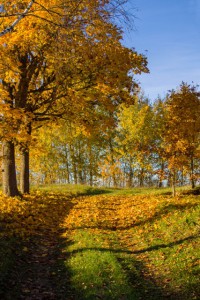Tuesday, 29.10.2013
Getting up at 8am. Our hostess has prepared us a nice breakfast with the African tea which was a big favourite yesterday. After breakfast all of us except Rūdolfs leave for the city. Once we are out of the gate, a matatu (Kenyan minibus) is there. The conductor asks us to come, but it doesn’t look like there are enough spaces – I end up squeezed next to Ināra as the 4th person on the 3 seats in the back, Ilva is sitting on my lap and Ilgonis on hers. Thankfully soon enough other passengers leave and by the time we reach the city, we each have our own seat.
We exchange the money to Kenyan shillings in a place close to the matatu station and then start our excursion around the city. Or closest object worth seeing is Jamia mosque. Nice and white, but we cannot see it from inside since one of the several prayers in the day is about to happen. The manager asks us to come back after 2:30pm.
We continue to Uhuru park. I had read in some places that it is nothing exceptional at all, but it turns out to be a rather nice place for a walk. There are several trees, which give at least some shade from the hot sun. Some bushes and trees are blooming in yellow and purple. At a pond it is possible to rent out a rowing boat, but we walk further.
There’s a mausoleum of Jomo Kenyatta – the founding father of Kenya. It is behind a gate, guarded by 2 guards. We are not allowed to take any photos, but otherwise the guards are kind and give us some background of Mr. Kenyatta and the flag of Kenya. The black means the colour of the people, the green – the land and nature, the white – the peace and the red – the blood given for that peace.The coat of arms is in the center.
We pass the parliament where the guard asks us to not take any photos as well, the houses of president and deputies and arrive at Kenyatta international conference centre. It is one of the tallest buildings in Nairobi and we really enjoy the view from the helipad on the top. The entrance fee of 400 shillings is worth it.
Drop in the local pharmacy for a local mosquito repellent spray and then we finally can go to the mosque. Some long wait there since the main guy is still busy with other business and then some more wait till they find out what to do with us as the visitor hours are normally in the morning. There are many prayers happening every day and Fridays are the most important days. The people in the prayer hall surprise us – some pray, but most of them sleep or poke their mobile phones. Ladies in a separate hall have gathered in small groups and chat.
After a small lunch trying out the local ugali, samosas, kebab and soups we go for an equally quick shopping and buy the cheapest good sized pots and pans we can find and that is at least twice as cheap as our car rental company was going to charge us for renting them for 2 weeks. We also get a spare petrol can.
Matatu to home is a bit more expensive. They are asking for 70 shillings/person saying that’s because of the rush hour. Previous day’s rush hour for Anders and Rūdolfs were 60 (as opposite to this day’s morning’s 50), so I argue a bit and pay 60 in the end.
And then the most tiring part of the day starts. I had arranged our cars to be at the house around 7pm, but they don’t appear. When I want to check with the owner whose house we are living in as part of the car deal, he’s out in a meeting and appear only around 11 at which point we move the planned food shopping to the next morning. Then it turns out that Maasai Mara has had some rains and Kapenguri (a town on our route to Lodwar, north from Kitale) is a place where the danger starts and 2 phone calls are necessary to make sure it is fine to let us go up to Marich Pass. I had thought 4WD are enough to go on A-level roads anytime and also on existing roads within animal parks and there was nothing both on contract and terms&conditions saying the cars cannot go somewhere. After much consideration when observing all this I tell him that we are not only going to MarichPass, but all the way up to Lodwar at which point he says that the cars cannot go there. But instead we could get a very strong 9 seater car with a driver. There are many reasons why I don’t like the idea of only 1 car and having a driver with us, so he would try to arrange a car with no driver. Also he’d try to get us a car fridge since the company I was going to rent it from is only renting them out with their cars. After all the discussion which finishes at around 2am, the plan is set to go shopping for food at 7:30am, be back at 8:30am and leave for the trip at 9am.
